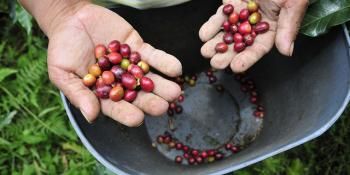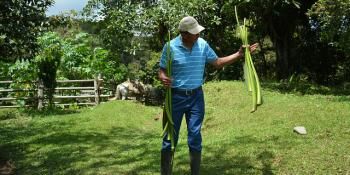3 steps to measure climate-smart agriculture outcomes

The new tool helps to examine the scope of a given program through the three dimensional lenses of climate-smart agriculture and supports the selection of appropriate indicators to measure outcomes.
Proposed as a solution to transform and reorient agricultural systems to support food security under the new realities of climate change, the concept of climate-smart agriculture (CSA) has reached sustained traction and it’s getting more and more integrated in the policy and development agendas worldwide.
In the recent INDCs submissions to UNFCCC 29 Parties mentioned CSA and 44 (all non-Annex 1), referred to mitigation and adaptation synergies, mitigation as a co-benefit of adaptation or vice versa. Countries are pushing for measures to improve farmers’ resilience to climate change and at the global level significant action and investments are now being oriented towards CSA.
CCAFS and partners commitment to facilitate the translation of the CSA concept into action is reflected in the co-development of a wide range of science-based evidence, frameworks, approaches and tools to support practitioners and donors in the design, implementation and scaling out/up of their CSA interventions and programs.
The CSA Programing and Indicator Tool has been designed to contribute to address both the need of good instruments for programming, and better metrics for tracking outcomes and impact, and to allow multiple development agencies and agricultural focused programs to share a common framework on how they are currently addressing climate-smart agriculture (CSA), and how they can make their future programing process more climate-smart.
Supported by a database of over 378 indicators with CSA-related indicators gathered from several international development agencies/ institutions (FAO, DFID, GIZ, IFAD-ASAP, World Bank, USAID and CCAFS), this tool will facilitate the delivery of not only productivity outcomes, but also positively tracking adaptation and mitigation impacts.
The tool consists of three steps:
Step 1: Definition of scope and Intentionality of desired outcomes
The user is invited to respond to specific questions related to the three CSA pillars. A traffic light system allows to specify the degree of intentionality desired (red: not at all, amber: indirectly and green: directly). The main objective being to enable users to more systematically check for potential co-benefits and/or unintended outcomes (in more than one pillar) and thus properly identify appropriate indicators and metrics for its M&E.
Step 2: Selection of intended scale of action (Household/Farm, Subnational, National) and Indicators Type based on the current stage of the intervention.
Step 3a: Results summary: Leads to a proposed set of relevant indicators that can be used and their closeness of fit to inform the design and M&E plan of future interventions.
Step 3b: Visualization: Intervention's evaluation through CSA lens and degree of intentionality
This step-by-step tool should serve as a guide tailored to the needs and capacity of each agency/practitioner.
Read more: CSA Programming and Indicator Tool
Download the companion document: CSA Programming and Indicator Tool: 3 Steps for increasing programming effectiveness and outcome tracking of CSA interventions
Osana Bonilla-Findji is Science Officer for the CCAFS Climate Smart Agricultural Practices Flagship.



